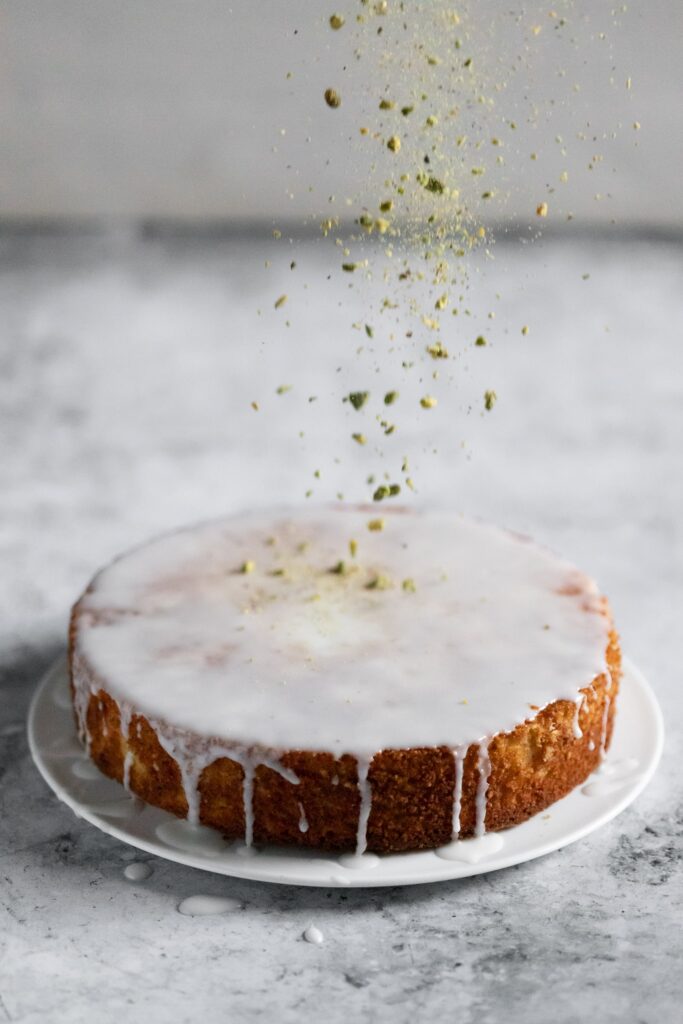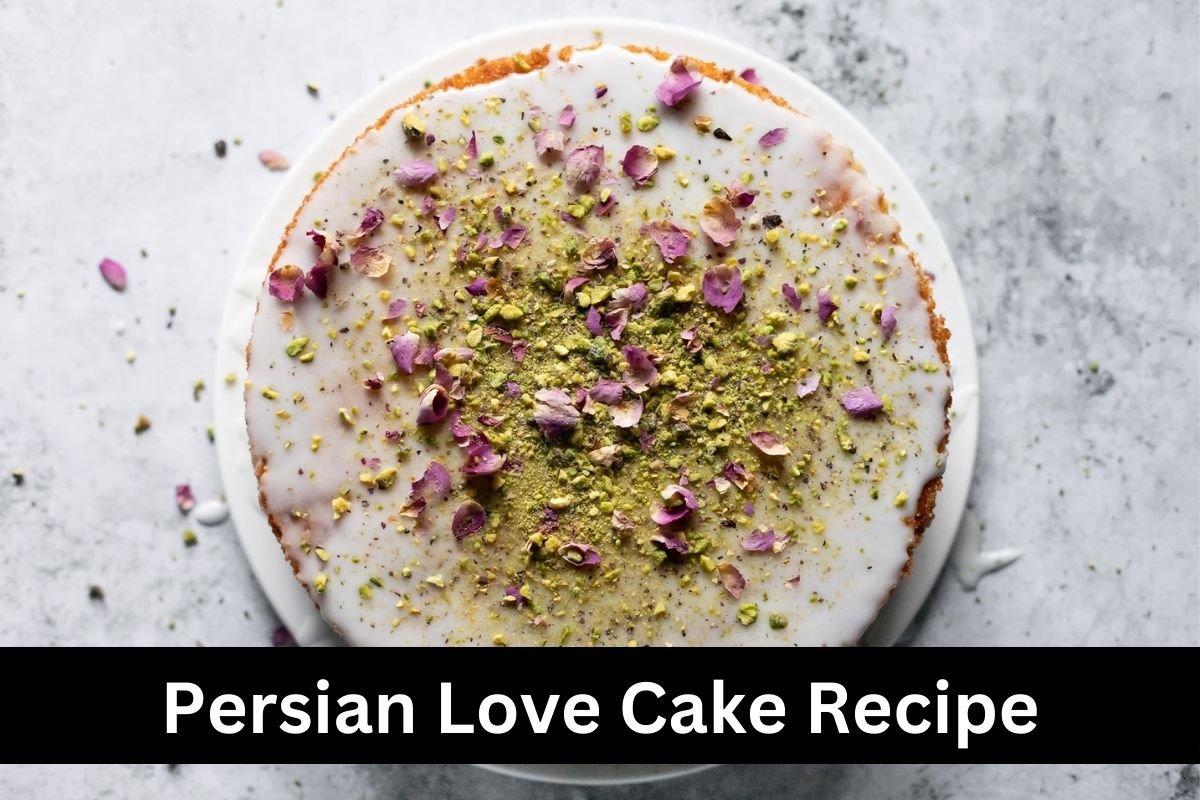Persian Love Cake Recipe :-This Persian love cake tastes just a little bit like flowers and is very moist and buttery. Add just the right amount of cardamom and rosewater, along with lemon or lime zest, and drizzle it with a rosewater citrus icing to make it taste sweet and sour.
Advertisement
This post has a recipe that will work for you. But I’ve also put together some styling tips for your Persian love cake. But you can’t go wrong—add some rose petals and icing, and it will be a beauty.
Advertisement
Advertisement
Persian Love Cake Recipe
Advertisement
ingredients :
for the cake:
- Butter, for greasing the pan
- 195g (1½ cup) all purpose flour
- 265g (2⅔ cups) almond flour
- 9g (2 tsp) baking powder
- 2.5g (1 tsp) baking soda
- 5.5g (1 tsp) salt
- 115g (1 stick) unsalted butter, softened at room temperature
- 300g (1½ cups) sugar
- 2g (1 tsp) lemon or lime zest
- 1g (½ tsp) cardamom
- 200g eggs (4 large), room temperature
- 240g (1 cup) buttermilk
- 10 g (2 tsp) rosewater
Advertisement
for the icing and decorations:
- 110g (1 cup) powdered sugar
- 7.5g (1½ tsp) rosewater
- 15g (1 Tbsp) lemon or lime juice
- Edible dried rose petals (optional)
- Ground raw pistachios (optional)
instructions :
- Warm the oven up to 180°C/350°F.
- Butter a 9-inch (23-cm) or 8-inch (20 cm) tall cake pan and put a round of parchment paper inside it.
- Whisk the flour, almond flour, baking powder, baking soda, and salt together in a medium-sized bowl. Use your whisk to break up any clumps, or sort it if you can’t get rid of all the lumps. Put away.
- Put the cardamom, butter, sugar, and citrus zest in the bowl of a stand mixer with the paddle attachment. You can also use a big mixing bowl and hand-beaters. For about two minutes, beat at a medium-high speed until the mixture is fluffier and more uniform.
Advertisement
- Put the cracked eggs in a jar with a lid that can be used to pour them out. Slow down the mixer a bit and add the eggs one at a time while it’s still going. Before adding the next egg, make sure the previous ones are fully mixed in. Clean the sides and bottom of the bowl, then beat it again to make sure it’s all mixed in.
- Just barely mix the rosewater and buttermilk together after adding them. Once more, scrape the bowl’s sides and bottom to make sure it’s all mixed together.
- Turn the mixer down to low and add the dry ingredients to the wet ones. Mix just until everything is well combined. Do not mix too much. Scrape the bottom of the bowl and fold it in half or twice by hand to make sure it’s all mixed in evenly.
Advertisement
- Put it in the pan that has been lined with parchment paper and smooth the top.
- Put it in the oven and bake for fifty minutes, or until a toothpick stuck in the middle comes out clean.
- With care, use a small knife to trace around the pan’s edges. Place it on a rack to cool. Wait at least an hour before painting it.
- Beat the powdered sugar, rosewater, and citrus juice together with a whisk until the icing is totally smooth while the cake cools.
Advertisement
- Put your cake on a plate or cake stand with the bottom side facing up after it has cooled. If your cake sank because you didn’t use a scale or enough flour, cut off the top so it sits level, then turn it over and put the bottom side up.
- Spread the icing over the top, and then use a knife or an offset spatula to smooth it out to the sides. Before it sets, top it with pistachios and rose flowers.
- Serve right away, leave extras out at room temperature for one or two days, and put anything you won’t be eating soon in the freezer as soon as possible (don’t put it in the fridge or it will go bad).
Advertisement

Advertisement
notes :
- A tall 8- or 9-inch cake pan seems to work for most people, but some have said that it spilled over. If your pan isn’t very deep, you might want to use one that’s a little bigger or deeper to keep the food from spilling over.
- Keep in mind that a pan with sloped sides will hold less food than one with steep sides. A normal pan with steep sides will make it less likely to overflow.
Advertisement
